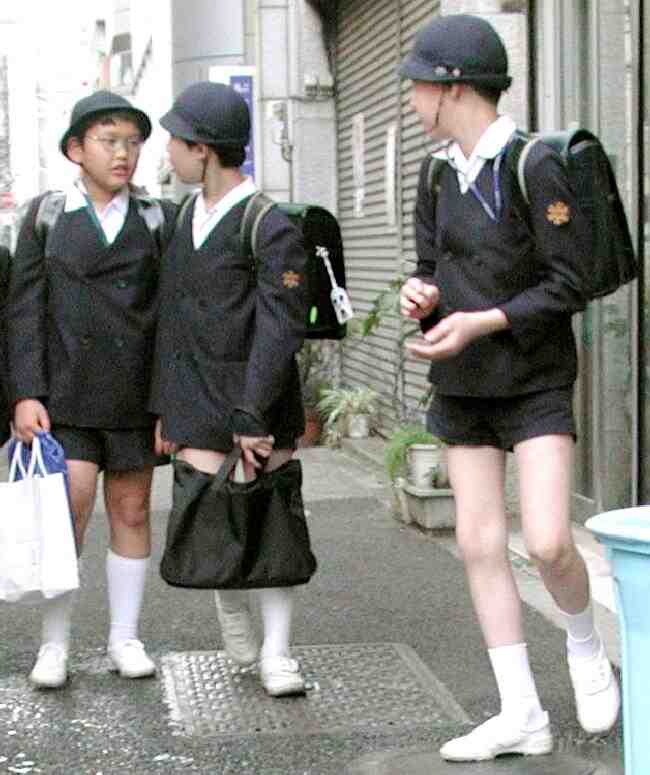
Figure 1.--This school very structly enforced its uniform. Even the book satchels were standardized. While white socks were required, the school let the boys wear either ankle socks or kneesocks. |

|
Many Japanese schools with uniforms are quite strict about the uniform and how it is worn. Sometimes teachers are even posted at the gate to make sure that the boys arrive wearing their caps with chine straps or checking other aspects of the uniform. The boys normally have to wear shirts, jackets, and shorts of a precise color and brand. Curiously at most schools there is much less attention given to hosiery. Normally a color may be closen but the boys can wear either kneesocks or ankle socks. Nor does keeping kneesocks pulled up seem to be a major issue as was the case at some British schools. Some times even variations in the brand and detailing are allowed. We are unsure why hosiery appears to be a matter of less concern than other elements of the uniform. Japanese schools probably tend to be less strict with socks and shoes than their British counteparts because shoes are usually taken off at the school entrance and replaced with a kind of slipper worn inside the school.
Many Japanese schools with uniforms are quite strict about the uniform and how it is worn. We see this in thev photographic record. We ee hroups of school children with all the children carefully kitted out as to the dchool's unform regulations. Japanese schools seem some of the most strict around the world about school uniform. Sometimes teachers are even posted at the gate to make sure that the boys arrive wearing their caps with chine straps or checking other aspects of the uniform. The boys normally have to wear shirts, jackets, and shorts of a precise color and brand.
Curiously given the strictness regarding the uniform at many Japanese schools, not as much attention is given to hosiery as most other elements of the uniform. This is not to say that hosiery was ignored, but we do seem to see variation here that was not notable in other aspects of the unifirm. This varied from school to school. Some schools are more strict than others. But at many schools there is much less attention given to hosiery. We do not have a lot of information on this. But the photographic record suggests that many schools, esven strict private schools, tolerated a considerable degree of variation in hosiery. Our information is largely based on the photographic record. Hopefully Japanese readers will provide us more information here.
We were rather surprised to see Japanese school children warried varied hosiery with their chool uniforms. s strict as many schools are with the unifirm, this was a surprise. We are unsure why hosiery appears to be a matter of less concern than other elements of the uniform in Japan.
We notice in other countries where school uniform is commonly worn like England, Scotland, and New Zealand, the hosiery is an integral part of the uniform. We note that Japanese children commonly take off their shoes at the school entrance and replaced with a kind of slipper worn inside the school. A reader writes, "Could it be that the more relaxed rules about hosiery come from the Japanese tradition of removing footwear indoors? Thus the stuff worn on the feet wouldn't be such an important part of the uniform, merely outerwear. But to me that would only make sense if the hosiery is removed along with the shoes. Might make different sense to the Japanese, of course." They do not, however, changes hosiery.
Related Chronolgy Pages in the Boys' Historical Web Site
[Main Chronology Page]
[The 1900s]
[The 1910s]
[The 1920s]
[The 1930s]
[The 1940s]
[The 1950s]
[The 1960s]
[The 1970s]
[The 1980s]
[The 1990s]
[The 2000s]
Navigate the Relate Boys Historical Clothing Style Pages
[Main country page]
[Long pants suits]
[Short pants suits]
[Lederhosen]
[Kneesocks]
[Eton suits]
[Jacket and trousers]
[Blazer
[School sandals]
Navigate the Boys' Historical Clothing Web Page
[Introduction]
[Activities]
[Biographies]
[Chronology]
[Clothing styles]
[Countries]
[Bibliographies]
[Contributions]
[FAQs]
[Glossary]
[Images]
[Links]
[Registration]
[Tools]
[Boys' Clothing Home]
